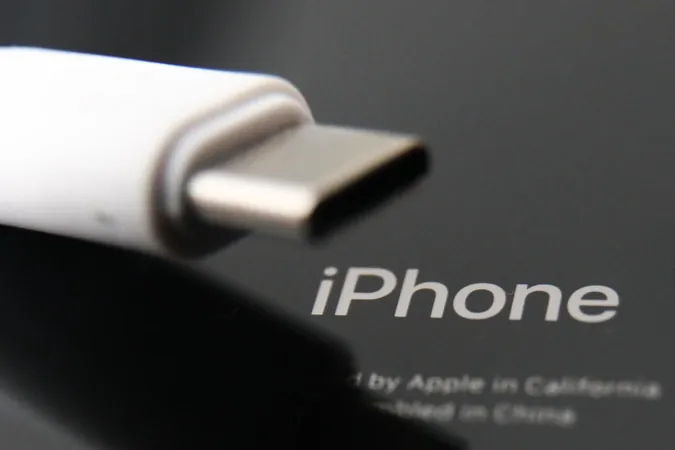
Apple iPhone USB-C Security Breach—What Users Must Know Now
2025-01-12
Author: Wai
Uncovering the USB-C Hack
At the 38th Chaos Communication Congress (38C3) in Hamburg, Germany, security researcher Thomas Roth, known in the hacking community as stacksmashing, revealed the details of this security breach. His presentation showcased how hackers exploited vulnerabilities in Apple’s custom ACE3 USB-C controller—originally introduced with the iPhone 15 series—to gain control over the device. This attack is notable as it symbolizes a potential weakness in Apple’s tightly controlled ecosystem.
The ACE3 component manages not only USB power delivery for iPhones but also functions as a microcontroller connected internally within the device. Roth managed to access and manipulate this controller through advanced techniques, including reverse engineering and electromagnetic fault injection. The ramifications of this hacking method are concerning: once inside, Roth could dump the ROM and investigate its functionalities, potentially uncovering pathways for future exploits.
What This Means for Users
While the initial findings of Roth's research seem primarily to affect Apple devices, the implications for wider smartphone security could be significant. Roth reassured Android users that this particular exploit would not have repercussions beyond Apple’s ecosystem, but he emphasized the need for vigilance among iPhone users. The security of smartphones can be compromised on various levels—from the main software running on the processor to the code on chips like the ACE3.
The research conducted by Roth has revealed gaps where vulnerabilities could potentially thrive if hackers take a malicious interest in exploring the firmware. According to Roth, having access to the firmware is crucial for identifying further weaknesses—meaning things could get quite interesting and risky, depending on who delves into this newfound knowledge.
Engagement with Apple
Upon discussing his findings with Apple, Roth noted that he had previously disclosed vulnerabilities found in their ACE2 controller and anticipated a fix. However, he later learned that Apple categorized the ACE2 flaw as a hardware issue, which would remain unaddressed. In response to the ACE3 vulnerability, Apple indicated they did not perceive it as a substantial threat, though Roth felt it was essential to report it as a foundational step for potential future research.
Final Thoughts
The hacking of the iPhone USB-C controller should serve as a wake-up call for all Apple users. As cyber threats evolve, so must our understanding of smartphone security. With the upcoming challenges that such vulnerabilities present, it could be wise for users to remain vigilant and proactive about their digital security. Keep an eye out for software updates from Apple that could potentially address these vulnerabilities once identified.
Stay tuned for updates on what steps Apple will take in response to these findings, and be sure to exercise caution when using your devices, especially when dealing with new software or connecting to unfamiliar networks.



 Brasil (PT)
Brasil (PT)
 Canada (EN)
Canada (EN)
 Chile (ES)
Chile (ES)
 Česko (CS)
Česko (CS)
 대한민국 (KO)
대한민국 (KO)
 España (ES)
España (ES)
 France (FR)
France (FR)
 Hong Kong (EN)
Hong Kong (EN)
 Italia (IT)
Italia (IT)
 日本 (JA)
日本 (JA)
 Magyarország (HU)
Magyarország (HU)
 Norge (NO)
Norge (NO)
 Polska (PL)
Polska (PL)
 Schweiz (DE)
Schweiz (DE)
 Singapore (EN)
Singapore (EN)
 Sverige (SV)
Sverige (SV)
 Suomi (FI)
Suomi (FI)
 Türkiye (TR)
Türkiye (TR)
 الإمارات العربية المتحدة (AR)
الإمارات العربية المتحدة (AR)